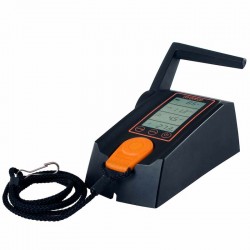Parts and maintenance
A boat powered by electric energy requires less maintenance than any other boat. The main spare parts and maintenance procedures are described in the manufacturers' manuals. To estimate the cost of maintaining your electric boat, simply compare the cost of spare parts. It's not impossible that annual maintenance is cheaper than buying a captain's cap!
The motors
Each motor requires varying degrees of maintenance, depending on its technology:
- Propeller motors have a seal around the shaft, which must be checked periodically and replaced preventively by a manufacturer-approved service center. On a day-to-day basis, simply check the condition of the propeller and anode regularly, and make sure that no fishing line is wrapped around the shaft. These are the main sensitive points of these motors.
- Nozzle motors have a propeller that rotates inside a nozzle, eliminating the need for seal and even gearboxes maintenance. Depending on the technology used, it may or may not be necessary to check that parts are properly lubricated. That's all!
In any case, the cost of running an electric motor is very low compared with traditional internal combustion engines.
The batteries
Battery wear depends on how you use it. The main indicators are the % of charge, sometimes referred to as SOC (State Of Charge), and the P ratio between the power drawn by the motor and the maximum power the battery can deliver.
Several technologies are available. Lithium is particularly interesting because it saves weight, which improves the boat's energy efficiency.
- If you're sailing on battery charge alone, ageing depends mainly on the number of discharge. To preserve them over time, only use the motor at full power in an emergency. Otherwise, always stay above 50% SOC and below 0.5 P ratio.
- If you're sailing on solar power, you may consider that the batteries are only there for safety. In this case, the batteries remain permanently charged. This is another advantage of a solar boat: batteries only wear out through their normal ageing factor. In fact, a battery wears out a little more if it remains 100% charged, so the ideal is to keep your SOC a little below 100%.
In a salty environment, it's best to regularly check the cleanliness of the battery and connections. A simple dry cloth - without touching the connections - will keep the battery as clean as the day it was installed. Don't forget that at the end of their life, batteries must be sent for recycling.
Screws
Screws must be made of stainless steel to protect against corrosion in salty environments. But when they come into contact with less noble metals, such as the aluminum used in engines or in the boat's structure, and are exposed to an electrolyte such as seawater, an oxidation reaction leads to galvanic corrosion. It is therefore necessary to apply a protective coating to the screws beforehand. Products such as Tef-Gel are available for this purpose. Screws should be regularly checked and cleaned, and re-coated as soon as corrosion begins.
Even stainless steel can oxidize at sea. That's why it's a good idea to inspect the screws regularly, even if there's no aluminum, and if rust appears, to replace them with A4 or 316L stainless steel screws.








